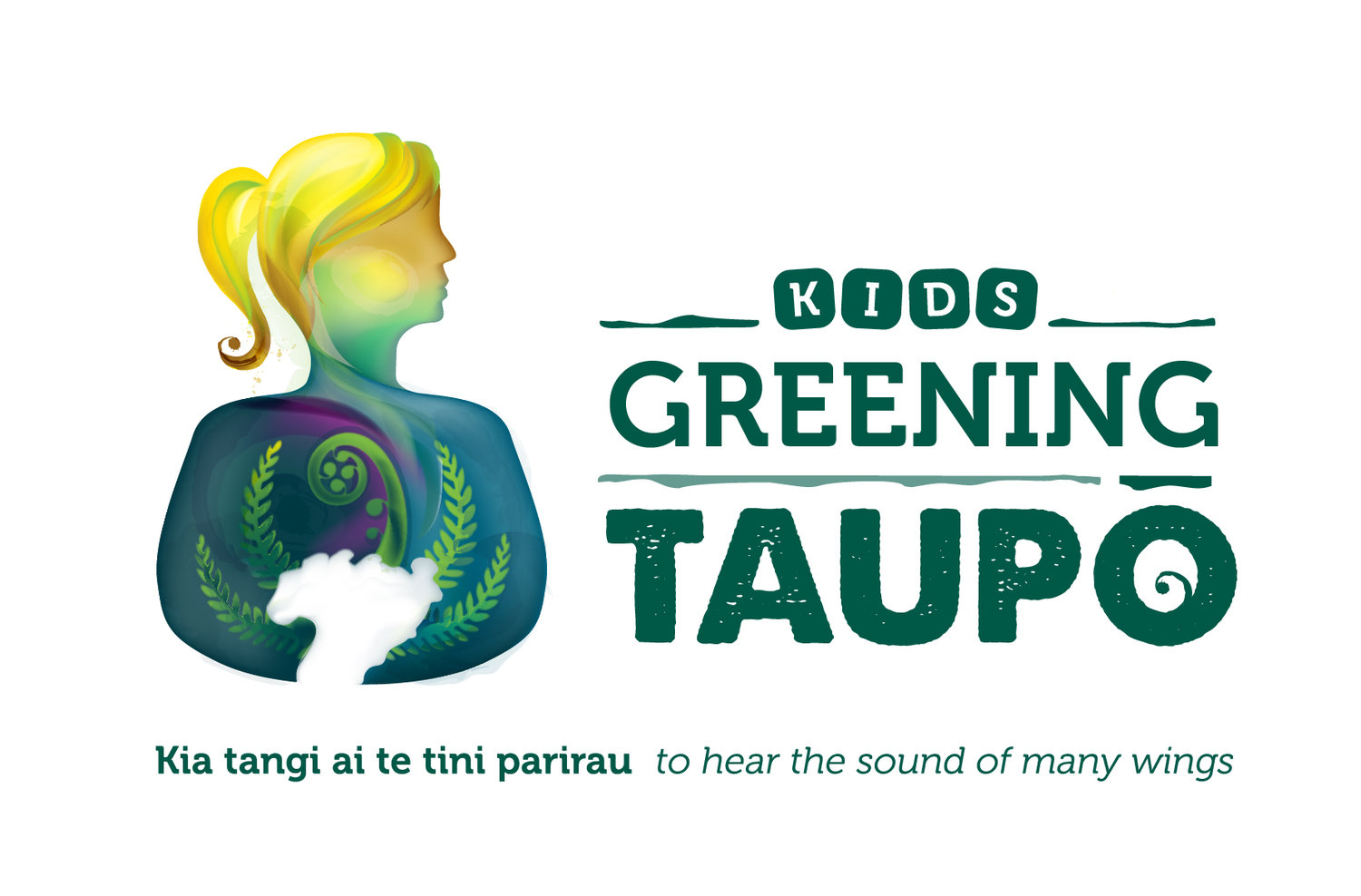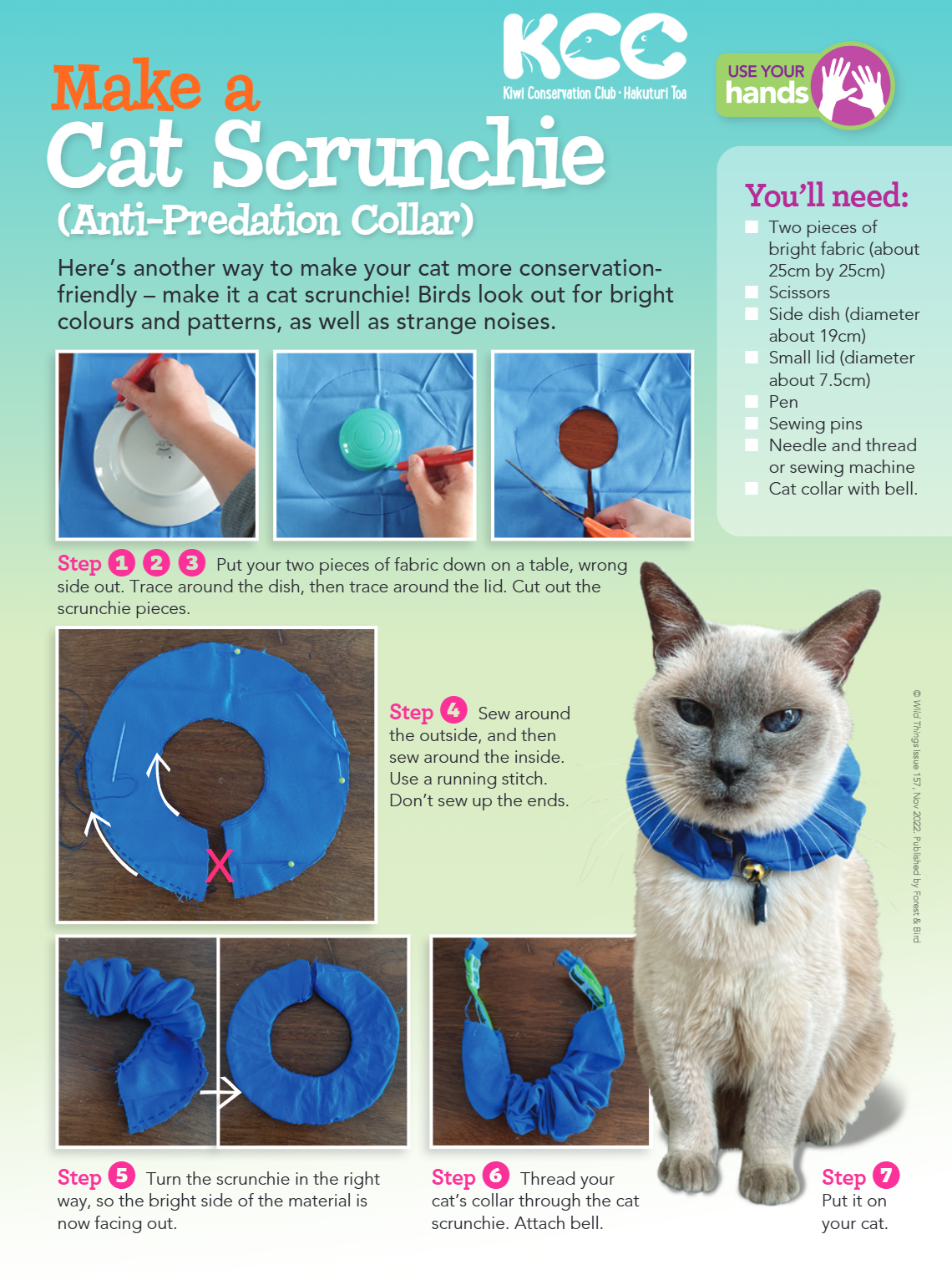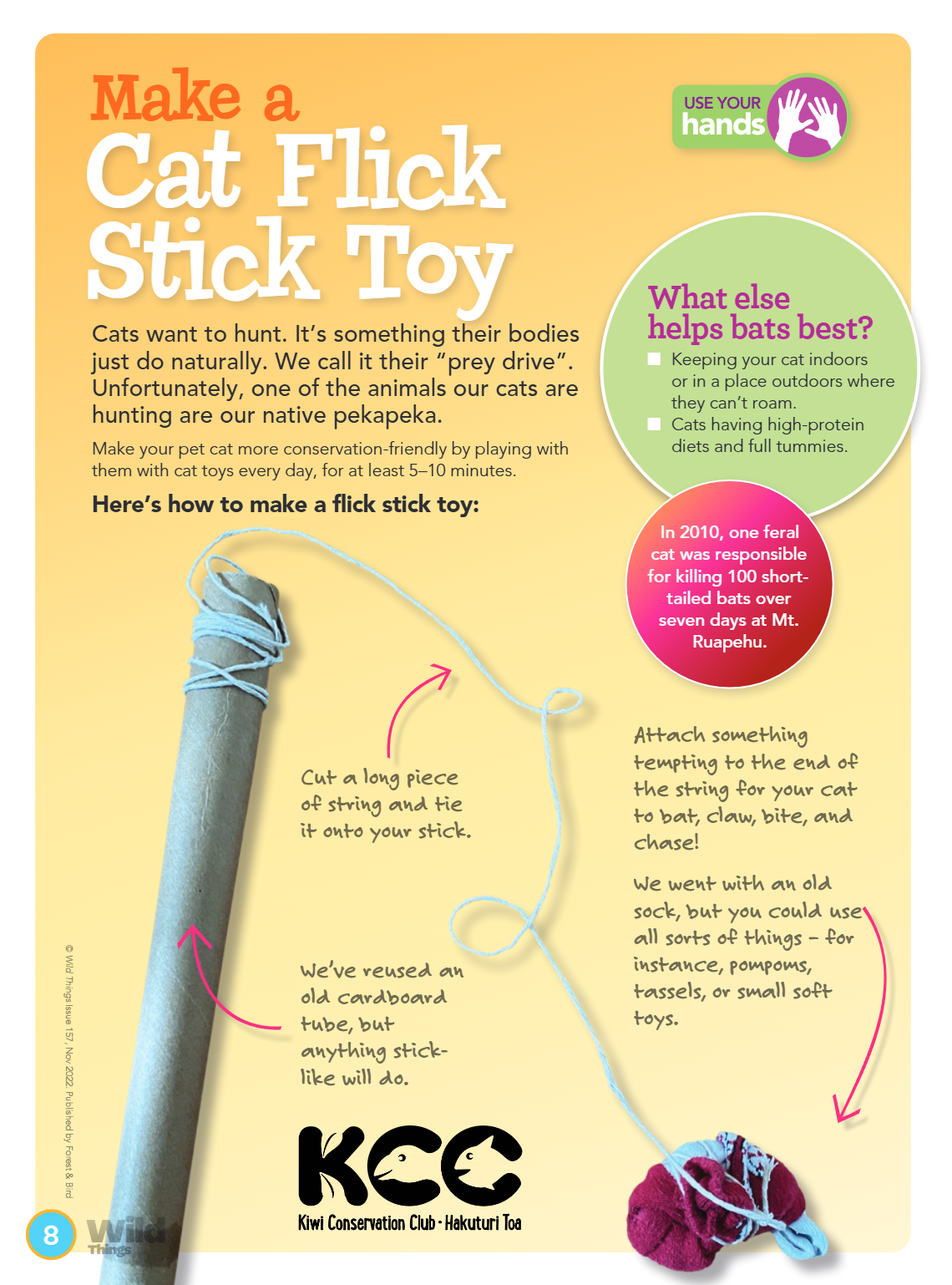Protect Native Species from Cats
This awesome resource is from KCC. Please go to the original page to download a PDF: https://kcc.org.nz/portfolio/make-a-cat-scrunchie/
Another fantastic KCC resource! Go to the original page to print a PDF: https://kcc.org.nz/portfolio/make-a-cat-flick-toy/
In Aotearoa, may of us have pet cats that we love as members of our family. However, we also love our native species, which unfortunately evolved without mammalian predators. These species evolved to hide from avian (bird) predators that hunt from the sky sing sight. They often live on the ground, ground nest, are stinky, are nocturnal, and freeze when scared- relying on camouflage. These things make them very vulnerable to mammals, like cats, which are often out at night and hunt on the ground using smell. Learn more about how our species evolved to be so unique here.
So, how can we enjoy having a pet cat, but prevent it from killing our native birds, lizards, and bugs?
We recommend reading this Predator Free NZ article, Five Ways to Up Your Game as a Responsible Cat Owner. It covers these things:
Keep your cats safe by switching to indoor living
Get creative with a catio
Indoor-outdoor flow (how to keep your cat inside your fence)
Snip ‘n’ chip: de-sex and microchip
Do the right thing with cat poo
The information and fantastic graphics below are from the Facebook page of BirdCare Aotearoa. They are an awesome organisation that looks after injured birds, which have often been attacked by cats. You can visit their website here to find advice about what to do if your cat attacks a bird, or you find an injured bird.
“How do I stop my cat catching birds?” It’s a question we hear every day, even more so at this time of year. We truly appreciate every responsible cat parent who has asked us for help! We totally understand that these changes can seem daunting at first. But we can all make changes to make the wild world safer for wild birds. We’ve compiled some tips below to get you started!
Sadly, we see many birds every day who have experienced cat interaction. It’s one of the top reasons we receive birds. They often arrive looking intact, but a vet exam typically reveals puncture wounds (often punctured organs), fractured bones, and internal bleeding from crush injuries. The bacteria in cats’ mouths is deadly for birds, and will lead to infection if left untreated. Unfortunately many of these birds arrive too badly injured to save. There are many tears shed during baby bird season when our small team receives huge numbers of caught-by-cat fledglings (sometimes 20+ in a day). Euthanasia is sometimes the kindest choice, but it’s never an easy one.
Aotearoa’s native and endemic birds are especially vulnerable to predation from introduced mammals such as cats. Historically Aotearoa had very few mammals, and our native and endemic birds did not evolve to cope with with them. Cats were introduced to the country by humans, and don’t have a natural place in the ecosystem.”- BirdCare Aotearoa.
This video shows a silvereye getting a vet exam after being caught by a cat.
This pet cat has just killed a native NZ skink in Wellington.
Photo: Rachel Thompson, KGT Coordinator
Teachers might like these activities from Science Learning Hub that look at animal ethics issues using cats as an example:
Other sources:













